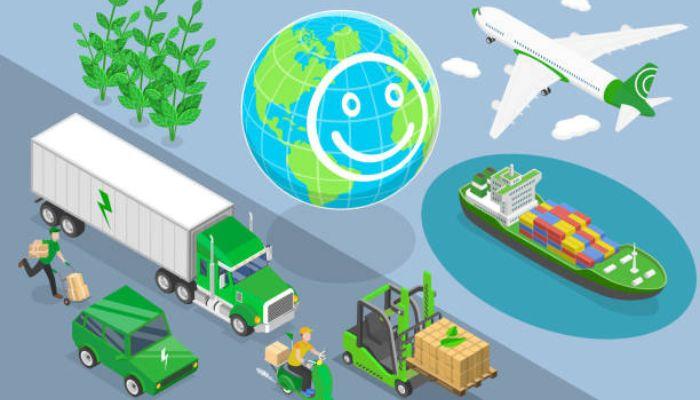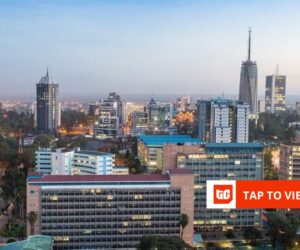Abstract:
The global logistics are in major upheaval due to geopolitical disorder, climate disorders, changing consumer needs, and changing technology. Efficient supply chains have to be reengineered to become resilient to volatility and recovery from shocks. This article helps to understand how logistics professionals can future-proof supply networks by building systemic resilience. It assesses diversified sourcing, digital visibility, collaborative frameworks, and the incorporation of sustainability, all supported by research and practical cases. It does so by emphasising the role of flexibility, rather than redundancy, as the defining characteristic of competitive logistics infrastructure in the networked world of today.
Introduction
Logistics networks, which have previously been perfected for cost and throughput, are breaking down due to consecutive global shocks. Just-in-time models were revealed to be fragile during the pandemic. The trade wars, the Red Sea blockades, port strikes, etc., keep repeating, and they all are indicative of the same broader trend: a supply chain designed for being lean does not function well in a complex and uncertain world. As a result, organisations have started seeing resilience as a form of strategy, one that does not attempt to predict which disruptive event will occur next but, rather, prepares the capacity to absorb, adapt and recover from whatever disturbance happens.
It requires a new understanding of logistics infrastructures, not as static systems but as dynamic networks and living systems. Organisations are learning to embrace the “new normal” using a combination of technology, agility, and sustainability to enable resilience to shocks and take advantage of new opportunities.
Strengthening through supplier diversification
Supplier or regional concentration is at the core of supply chain fragility. This sourcing concentration, for example, has meant a reliance on Chinese factories, and when factories all shut down in 2020, global brands were left extremely vulnerable. On the other hand, those with distributed suppliers were able to perform better and relatively more easily redirect operations to Southeast Asia or Latin America.
Again, diversification is not a question of numbers; it has to align with the line of quality, proximity, cost, and risk exposure. These resilient companies are identifying key dependencies across tier-one and sub-tier suppliers, evaluating points of possible supplier failure, and establishing alternate supply relationships before disruption. This backup plan offers flexibility and allows a firm to hedge against currency changes, political sanctions, or infrastructure collapse.
These endeavours are not limited to contracts. Collaborative partnerships, in which suppliers invest with the company in technology and contingency planning, prove to be a more sustainable model. A recent McKinsey Report (2023) affirms that companies that pursued collaborative supplier partnerships were 25 percent quicker than others to recover their supply during the Suez Canal blockage.
Anticipation through scenario planning and digital risk intelligence
Adaptability is born out of vision. An increasing number of organisations are beginning to adopt the digital twin paradigm of building a virtual model of the supply chain simulating a hypothetical disruption, a factory fire or cyberattack, for instance. Through the use of digital simulations, logistics decision-makers can visualise the effects of, for instance, port closures, slowdowns at borders, or a lack of raw materials and set action plans before the crisis happens.
In addition to modelling, the newest generation of advanced analytics platforms combines dynamic risk mapping with live updates on the weather, political intelligence, and levels of social unrest. Enabling them to not just forecast disruptions days – or even weeks – in advance, but also automatically initiate mitigations such as shipment rerouting or pre-ordering critical components.
Companies that use anticipatory analytics in their decision-making not only recover faster but, in many cases, do not suffer any impact. For example, DHL’s Resilience360 platform has supported customers in reducing their supply lead time by 22 percent due to the effects of weather events by means of early alerts and optimised routing.
Logistics network flexibility and modular redesign
Inflexible logistics systems, particularly those in a hub & spoke mode, have proven to be vulnerable to stress. Top companies are transitioning into logistic designs that are modular, whereby a decentralised node that might be the point of failure could have the pressure absorbed by all the other similar nodes. The redundancy in structure provides for flexible rerouting, local inventory buffering, and fulfillment from multiple locations.
Also, the resilience of the system lies in the fact that flexible transport plans can be developed, as intermodal transitions between air, sea, and rail can be easily implemented. In the COVID-19 period, some Asian exporters made the switch to chartered air freight for critical shipments when shipping capacity fell apart and maintained delivery reliability even if substantially more expensive.
Warehousing strategies are changing as well. AI demand forecasting allows for inventory to be held closer to the customer and moved as needed. They reduce the requirement for big regional warehouses and help remove last-mile bottlenecks.
Embedding circular and sustainable practices
Sustainability is wrongly positioned as a distant goal that is not related to the resilience of the supply. But practices more sensitive to the environment can also improve resilience. An example would be that reverse logistics systems enable the reuse of returned products and/or packaging and create circularity in materials while avoiding virgin imports.
Green transport options, including electric vehicles and improved routing, lower emissions and reliance on tenuous fuel markets. Investing in multimodal freight – preferably sea or rail – also reduces vulnerabilities to disruptions or rising costs of air cargo.
The policy push will only increase with carbon border taxes and emission regulations. The logistics leaders who are incorporating sustainability into their operations today are building operations that can sustain the future. The World Economic Forum 2023 even argues that businesses with strong integrated ESG practices are 1.5 times more likely to recover from climate-related disruptions and maintain customer trust during a crisis.
Collaboration as strategic insurance
Resilience is constrained by silos within organisations. Integration across functions – across purchasing, operations, IT, etc. – provides visibility and speeds up coordination. Plus, collaboration with others is emerging as the main pillar for sound logistics ecosystems.
A collaboration between customs authorities and private logistics operators in public-private corridor risk-sharing agreements has seen a decrease of 30 percent in cargo waiting times along East African trade routes (World Bank 2022). One of the successful models has been the sharing of information among industry consortia on disruptions to supplies, something that can be done without revealing competitive information, particularly for the pharmaceutical and perishable goods industries.
The collaboration of the workforce is also important. Resilience becomes something practical rather than something that is a concept by upskilling logistics personnel to interpret data from multiple platforms and create and implement adaptive plans. Organisations with disaster-recovery resilient cultures, where each team member acknowledges their role in sustaining the business, have faster recoveries and superior innovation.
Building intelligence into metrics
Indicating resilience in the supply chain means departing from existing performance metrics, such as lead time and inventory turnover. Instead, outputs such as Service Level Achieved, Volatility Adjusted Service Level, Recovery Time Objective (RTO), or Time to Adapt Scores provide insights into the speed at which the system stabilises after a disruption.
For example, companies have started to track real-time dashboards on the use of capacity risk-weighted, allowing them to spot in advance the symptoms of overload or stockouts. Others integrate machine learning into planning systems that adjust via continuous updating of predictions according to the evolution of the situation.
Importantly, measurements of resilience must be connected to outcomes on the business side. The above-and-beyond short-term cost savings create strong customer loyalty and brand protection from service failures or interruptions.
Conclusion
Logistics resilience is no longer a “nice to have” capability but rather a “must have” to be competitive. When shocks cease to be singular and become systemic, it is down to the logistics professional to guide and implement the needed change away from brittle linear models and toward adaptive models based on circularity and intelligence.
The transformation is cultural as much as it is technological. In other words, the approach needed is one that embraces dislocation as a reality rather than fear. The ones who are able to anticipate, be prepared and adapt will be the leaders of the next generation of supply.
Be it predictive analytics, working with suppliers, digital twins, or circular warehousing, the question every lever must now respond to is how fast can we advance from where we stand? And that is the ultimate design test of resilience.
About the author:
Adeola Jayeola is a supply chain and logistics professional known for building resilient operations, driving cost-saving initiatives, and championing women’s leadership in the industry.
REFERENCES
Ivanov, D., & Dolgui, A. (2020). Viability of intertwined supply networks: Extending the supply chain resilience angles towards survivability. International Journal of Production Research, 58(10), 2904–2915. https://www.tandfonline.com/doi/full/10.1080/00207543.2020.1750727
McKinsey & Company. (2020). Risk, resilience, and rebalancing in global value chains. https://www.mckinsey.com/~/media/mckinsey/business%20functions/operations/our%20insights/risk%20resilience%20and%20rebalancing%20in%20global%20value%20chains/risk-resilience-and-rebalancing-in-global-value-chains-full-report-vh.pdf
Business Continuity Institute. (2022). Supply Chain Resilience Report. https://www.thebci.org/static/340ffa9b-03b4-4baf-9add7071cbbea758/BCI-Supply-Chain-Resilience-Report-2023.pdf
Ivanov, D., & Dolgui, A. (2020). Viability of intertwined supply networks: Extending the supply chain resilience angles towards survivability. International Journal of Production Research, 58(10), 2904-2915. https://www.tandfonline.com/doi/full/10.1080/00207543.2020.1750727
McKinsey & Company. (2023). Supply chain resilience: 25% faster recovery through collaborative supplier partnerships.
https://www.mckinsey.com/capabilities/operations/our-insights/future-proofing-the-supply-chain








